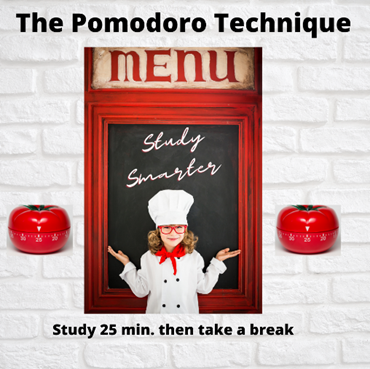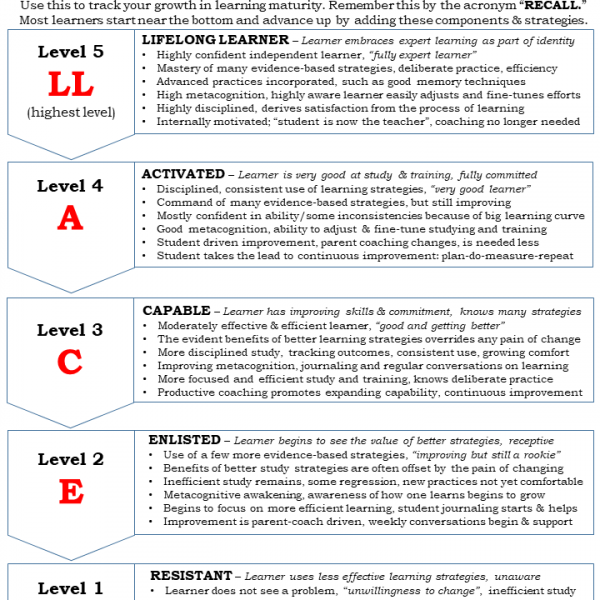
Study Smarter with the Pomodoro Technique

Reading time: 10 minutes
Summary
Your family should know the Pomodoro Technique because not only is it one of the most powerful learning strategies – it’s remarkably simple to do. Many college students are enthusiastic users who swear that it makes them much more effective at learning and working. Many knowledge workers use it to get the most out of their workdays.
If you have ever pondered this question — how long should my child study before taking a break, this provides the solution.
 The answer may surprise you. Most students tend to study too long before they take a break, allowing their brains to fatigue and therefore experience diminishing returns.
The answer may surprise you. Most students tend to study too long before they take a break, allowing their brains to fatigue and therefore experience diminishing returns.
Read this to understand how you can help your kids study smarter and more efficiently. It makes a great learning tool to talk about a study strategy you need to know.
What Learning Problem does This Solve?
When you study, the potential problem is one word – fatigue. It’s the stealthy enemy we all face when learning.
 You may not know this, but your brain works hard while you are learning and studying. It’s using a surprising 20 to 25 percent of your body’s total energy, and like a muscle, it fatigues and needs frequent breaks to recover. But unlike a muscle, this fatigue is hard to detect, we aren’t aware it’s happening, and we work our brains at longer intervals than we should.
You may not know this, but your brain works hard while you are learning and studying. It’s using a surprising 20 to 25 percent of your body’s total energy, and like a muscle, it fatigues and needs frequent breaks to recover. But unlike a muscle, this fatigue is hard to detect, we aren’t aware it’s happening, and we work our brains at longer intervals than we should.
A smart study strategy is to give your brain enough oxygen and fuel to allow it to recover. The solution has two components – working in shorter intervals, then rewarding yourself with some movement, like a little walk around the house, to get your heart rate up a bit.
Stand up, stretch, do push-ups if you want, do something to get more oxygen to your brain whenever you study, this is important. Walk around or briefly exercise during breaks – don’t just sit there. And do this often.
This means you need a strategy that encourages you to consistently take breaks.
How the Pomodoro Technique Works
Introducing the Pomodoro technique – a smart way to organize your study to work in short 30-minute intervals that act as learning sprints separated by short breaks.
 The Pomodoro technique helps you resist those self-interruptions and retrain your brain to focus. Each Pomodoro is dedicated to one task and each break that follows is a chance to reset your brain and bring it back to focus on your work. That’s it – the idea is to learn in short sprints, then giving your brain recovery time by getting up from your work area and moving around. It’s a way to pace your learning and better manage your energy.
The Pomodoro technique helps you resist those self-interruptions and retrain your brain to focus. Each Pomodoro is dedicated to one task and each break that follows is a chance to reset your brain and bring it back to focus on your work. That’s it – the idea is to learn in short sprints, then giving your brain recovery time by getting up from your work area and moving around. It’s a way to pace your learning and better manage your energy.
Better learners practice study strategies that consider how the brain works. This is one of them. College students who use the Pomodoro technique report learning more in the same amount of time. It’s difficult to recognize the subtle but diminishing return we are getting as our brains start to fatigue.
Perhaps we tend to want to “power through” the task and just get it done. This may work for other activities, but when you are trying to learn, this is a mistake.
You become an advocate for smarter learning when you coach your kids on how to get the most out of the time and effort expended studying. Emphasize efficient learning.
Let’s explore the detail of this technique.
What’s with the Funny Name?
The first question most ask is this – what’s with the goofy name?

The term “Pomodoro” was coined in the early ‘90s by the author Francesco Cirillo. He named the technique after the little tomato-shaped kitchen timer he had and used. The term “Pomodoro” is the Italian word for tomato. This represents a better way to study and learn.
POMODORO KITCHEN TIMER
 Have fun and encourage your kids to do this technique by calling for Tomato time!
Have fun and encourage your kids to do this technique by calling for Tomato time!
For a large series of study tasks, break them into multiple Pomodoros. The idea is to work in short sprints with forced breaks to keep you motivated – don’t skip the breaks. Working in longer intervals, for most people, risks brain fatigue and lower work efficiency, which can be masked by an illusion of being productive.
| The Pomodoro timer is the “unofficial” symbol of the Center for Homeschooling. We like it because first, it’s cute, of course, but also because it’s symbolic to a connection – something that is a tried-and-true old-school device like “grandmother” used — but now repurposed for new up-to-date science validated learning. |
What You Need to Do It
First, the timer is not an optional fashion accessory – it is important. Each of your kids will need their personal timer. Don’t skip this little tool – without it, it’s easy to lose track of time when deeply focused on learning. Digital or analog doesn’t matter – let them choose. But some feel the act of twisting a device serves the purpose of cueing the brain to prepare for learning. I like twisting my tomato and setting it in front of my work. (Caution – if you go mechanical, try it before you buy it – some are pretty noisy)
 And the best timer is not the timer on the smartphone – phones in the study area are a big distraction.
And the best timer is not the timer on the smartphone – phones in the study area are a big distraction.
 Next, choose the right location where you will have zero distractions and interruptions. Before each timed session, have all of the materials organized and ready to go. Then follow the five steps of the technique.
Next, choose the right location where you will have zero distractions and interruptions. Before each timed session, have all of the materials organized and ready to go. Then follow the five steps of the technique.
How to in Five Steps!
It’s easy to get started, just make sure you have your timer at hand.

This is how you do it:
- Pick one task to work on. Only one so you can focus. Get all of your materials organized and ready. Turn off all alerts and notifications.
- Set your timer to 25 minutes.
- Dedicate yourself to learning and focus on intentional study, work deeply without distraction until the timer rings.
- When it rings – stop your work! Get up, step away; give your brain a short break. Move so you get more oxygen to your brain. Some people do push-ups to get that energy moving. Eat a snack!
- Write down you completed one Pomodoro. Check it off your list. This will help you feel a sense of accomplishment.
When your kids have longer study sessions, they can repeat this 3 more times, if needed, then take a longer 15-20-minute break. This is called clustered Pomodoros! (get it – clustered tomatoes?)
Thanks to learning expert and author Barb Oakley for these 5 steps.
Next – Take a Break and Reward Yourself
When you want a new habit to stick, you need to find a way to reward yourself for doing it. We all need little psychological tricks to keep us motivated. Between Pomodoro sessions, encourage your kids to get up and do something active for five minutes that they find rewarding. Feeding the brain with something special is one approach.
 Or encourage them to walk around, or if you’re inclined to a bigger boost of oxygen, do a group exercise. Mix it up, but always do something active after each Pomodoro.
Or encourage them to walk around, or if you’re inclined to a bigger boost of oxygen, do a group exercise. Mix it up, but always do something active after each Pomodoro.
The break is important for another purpose. Did you know within this decompression time that learning is going on? That’s right, you don’t realize it, but your brain has switched gears into a retention-driven mode called diffuse thinking. Your diffuse thinking mode, which is your subconscious learning, kicks in to help you keep learning.
Think about this – during your break you continue to learn because your brain is consolidating information! This is why after a break, when you sit down, you discover you now have a solution to a problem you couldn’t solve. Infrequent breaks lose this benefit.
The 30-minute interval of the Pomodoro nicely rounds out to two per hour for planning. This makes it easy to organize your studying and your training by Pomodoros. I’ve found it more motivating to toss out allocating minutes to study, and instead, for both my work and learning, planning with Pomodoro units. Four Pomodoros seem much more approachable than writing for two long hours or (ugh) 120 minutes.
I suggest you incorporate the term into your conversations about learning – get your kids to start talking about how many Pomodoros they will use today for math, or that piano lesson. For younger kids, get creative to make it fun, for example, draw little tomatoes on their study boards when they complete their assignments!
Ciao!







